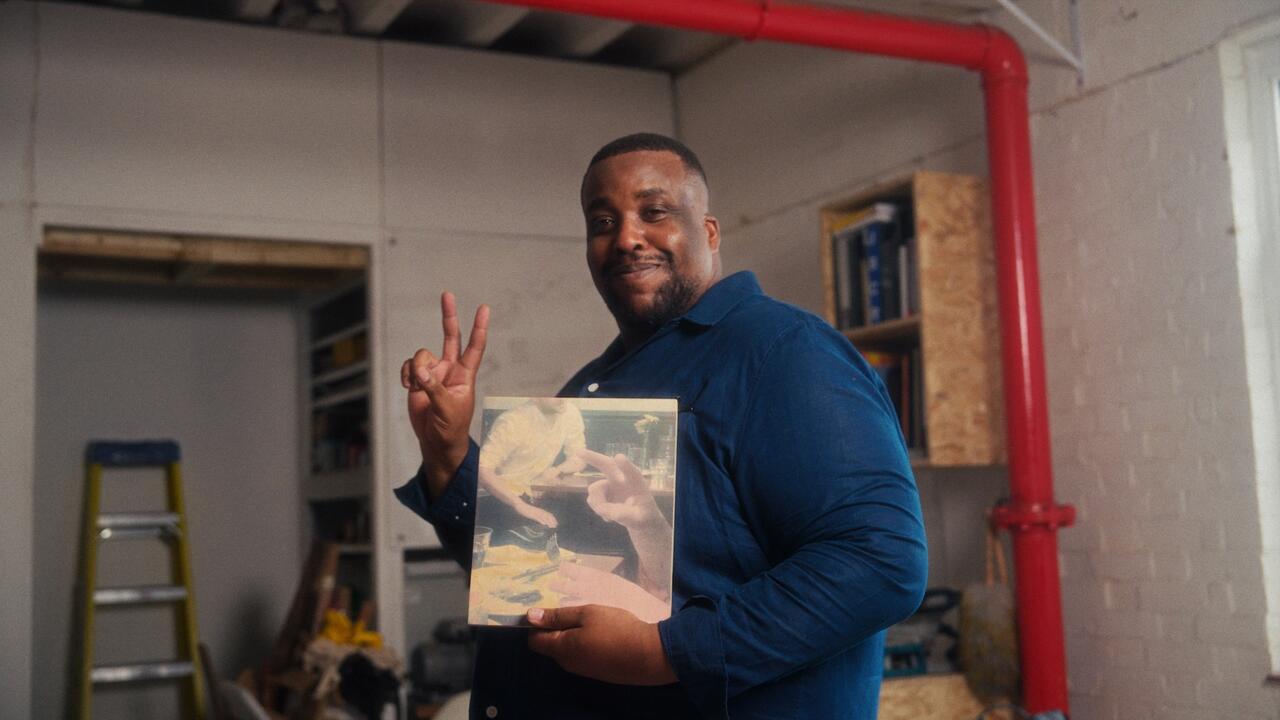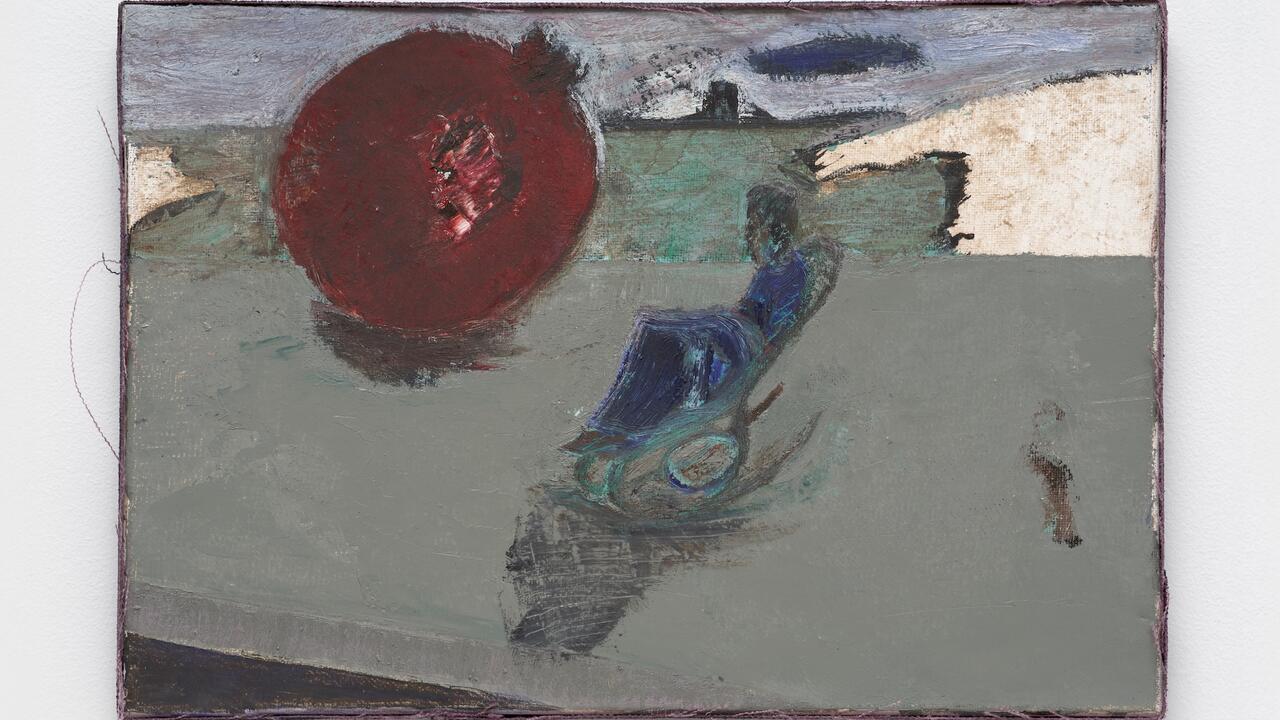Glenn Sorensen
'The night palm can survive and is quite happy in dimly lit parts of apartments', observed Glenn Sorensen about the subject of one of his recent paintings. More than a botanical curiosity, this resilient plant is the ideal companion for an Australian painter living in Sweden, where in winter the sky is dark for 17 hours a day and every second of sunlight counts. Like the night palm, Sorensen is capable of thriving under somnolent conditions, synthesizing lush, painterly vignettes from little more than a waning late-afternoon glow.
In this group of a dozen recent paintings Sorensen continues to be preoccupied with household still lifes: a potted plant on a windowsill, a chair and a scatter pillow, a pair of slippers. The nicotine motif of his earlier work - cigarettes nestled in foliage, ashtrays ringed in smoke - is absent, maybe because of the infant who appears in Late Night and April (all works 2002). The leaves and petals that float across his canvases are as dreamy and drowsy as ever, rendered in lush shades of periwinkle, lavender and azalea, and even an image of a baby gate at the top of a staircase has a perversely narcotic appeal.
Preciously proportioned and installed with generous spacing, the paintings look fragmentary in this high-ceilinged, previously industrial setting. Fortunately Sorensen has attempted to compensate for his work's slight physical presence by annotating the gallery's checklist with brief descriptions. Written in the third person, they offer background titbits and interpretative hints with humorous condescension: 'Mr Sorensen is holding his son from behind, his hands seen around the baby's chest. It is called Late Night because the baby has a habit of being very active very late.' Perfectly matched to the taciturn quality of the paintings, these labels underscore the artist's often opaque domesticity.
Sorensen's palette transforms his environment, restricted here to his house and studio, into a watered-down, slightly overcast Giverny. Stated without irony, this reference would make most contemporary painters cringe, but Sorensen has no such qualms: His Chrysanthemums, after a catalogue image of a Hokusai print owned by Claude Monet, pays tribute to Impressionist japonisme in a monochrome pink you could practically blow bubbles with. There are worse things, it seems to be saying, than using painting to set a mood - a mood, moreover, that penetrates several layers of appropriation.
Monet, of course, was rumoured never to have used black. Sorensen does, occasionally, although sometimes the eye is misled by what is actually a velvety Prussian blue. The ground of the paintings drains the vitality of the wan vegetation set against them, creating an unnatural phosphorescence, a peculiar, sleepy kind of opticality. Plant by the Window oscillates between two different paintings, a Neue Sachlichkeit stem structure in a stark, photographic space and a distant clump of sunlit, sugary foliage. It captures all the cruelty of midwinter landscapes, which taunt restless viewers with visions of crystalline splendour only to deliver a mind-numbing arctic blast.
In other works Sorensen gently mocks the cliche of the Scandinavian lifestyle, a socialist Utopia of disposable and utilitarian design. In Vase and Slippers a vase seen from overhead becomes a Modernist target, pristine in its clean-lined symmetry but for the toes of Chinese slippers intruding from the bottom of the canvas (footwear that Sorensen, by his own humble description, 'wears only when in the studio to avoid spreading paint on his feet throughout the house'). The aesthetic is subdued yet cheery, Luc Tuymans by way of Ikea.
The paintings' resolutely banal content and unambitious scale could easily become liabilities. Clothes On the Butterfly Chair would seem to fall into this category, conjuring the late-night desperation of a foundation student on a deadline. Sorensen renders it beautifully, though, playing the near abstract folds of an indistinct blue garment against one very pleasing purple-and-green-striped sock. At a time when so many artists are making paintings closer in spirit and technique to drawings, Sorensen's reticent, slow-burning compositions stand out in spite of themselves. They are, in his words, 'about form, colour, composition and the organization of positive and negative into a pleasing order', the end-products of a process of photosynthesis every bit as mysterious as that of the night palm.
















